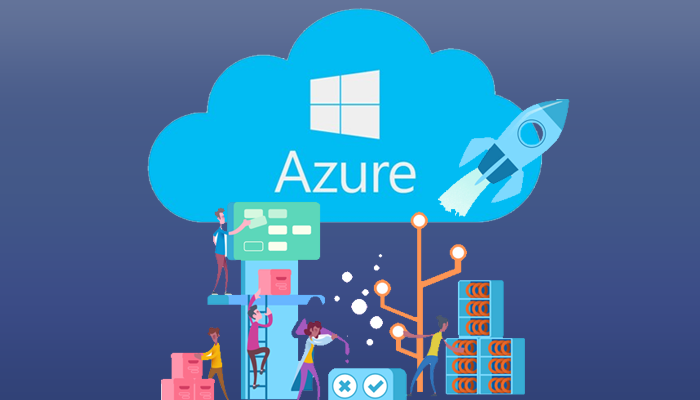Introduction
This is top class certification exam of Microsoft. It is designed by group of Microsoft advanced level official certification experts. It has covered all the aspects of depth in the technical questions and delivery methodology of official Microsoft certification by following the complete exam syllabus. This certification questions will give you the most realistic experience in the real world exam.
Exam Details:
This Exam contains multiple choices, multi selection and true or false questions.
Exam Time Limit: 90 Minutes
Exam Syllabus:
, please contact
your Regional
Service Center.
Hide all
Design
a DevOps Strategy (20-25%)
- Recommend
a migration and consolidation strategy for DevOps tools
·
Analyze existing artifact (e.g. deployment packages, NuGet) and
container repositories
·
Analyze existing test management tools
·
Analyze existing work management tools
·
Recommend migration and integration strategies for artifact
repositories, source control, test management, and work management
- Design
and implement an Agile work management approach
·
Identify and recommend project metrics, KPIs, and DevOps
measurements (e.g. cycle time, lead time, Azure Kubernetes Service, WIP limit)
·
Implement tools and processes to support Agile work management
·
Mentor team members on Agile techniques and practices
·
Recommend an organization structure that supports scaling Agile
practices
·
Recommend in-team and cross-team collaboration mechanisms
- Design
a quality strategy
·
Analyze existing quality environment
·
Identify and recommend quality metrics
·
Recommend a strategy for feature flag lifecycle
·
Recommend a strategy for measuring and managing technical debt
·
Recommend changes to team structure to optimize quality
·
Recommend performance testing strategy
- Design
a secure development process
·
Inspect and validate code base for compliance
·
Inspect and validate infrastructure for compliance
·
Recommend a secure development strategy
·
Recommend tools and practices to integrate code security
validation (e.g. static code analysis)
·
Recommend tools and practices to integrate infrastructure
security validation
- Design
a tool integration strategy
·
Design a license management strategy (e.g. Azure DevOps users,
concurrent pipelines, test environments, open source software licensing, DevOps
tools and services, package management licensing)
·
Design a strategy for end-to-end traceability from work items to
working software
·
Design a strategy for integrating monitoring and feedback to
development teams
·
Design an authentication and access strategy
·
Design a strategy for integrating on-premises and cloud
resources
Implement DevOps Development
Processes (20-25%)
- Design
a version control strategy
·
Recommend branching models
·
Recommend version control systems
·
Recommend code flow strategy
- Implement
and integrate source control
·
Integrate external source control
·
Integrate source control into third-party continuous integration
and continuous deployment (CI/CD) systems
- Implement
and manage build infrastructure
·
Implement private and hosted agents
·
Integrate third party build systems
·
Recommend strategy for concurrent pipelines
·
Manage VSTS pipeline configuration (e.g. agent queues, service
endpoints, pools, webhooks)
- Implement
code flow
·
Implement pull request strategies
·
Implement branch and fork strategies
·
Configure branch policies
- Implement
a mobile DevOps strategy
·
Manage mobile target device sets and distribution groups
·
Manage target UI test device sets
·
Provision tester devices for deployment
·
Create public and private distribution groups
- Managing
application configuration and secrets
·
Implement a secure and compliant development process
·
Implement general (non-secret) configuration data
·
Manage secrets, tokens, and certificates
·
Implement applications configurations (e.g. Web App, Azure
Kubernetes Service, containers)
·
Implement secrets management (e.g. Web App, Azure Kubernetes
Service, containers, Azure Key Vault)
·
Implement tools for managing security and compliance in the
pipeline
Implement Continuous
Integration (10-15%)
- Manage
code quality and security policies
·
Monitor code quality
·
Configure build to report on code coverage
·
Manage automated test quality
·
Manage test suites and categories
·
Monitor quality of tests
·
Integrate security analysis tools (e.g. SonarQube, WhiteSource
Bolt, Open Web Application Security Project)
- Implement
a container build strategy
·
Create deployable images (e.g. Docker, Azure Container Registry)
·
Analyze and integrate Docker multi-stage builds
- Implement
a build strategy
·
Design build triggers, tools, integrations, and workflow
·
Implement a hybrid build process
·
Implement multi-agent builds
·
Recommend build tools and configuration
·
Set up an automated build workflow
Implement Continuous Delivery
(10-15%)
- Design
a release strategy
·
Recommend release tools
·
Identify and recommend release approvals and gates
·
Recommend strategy for measuring quality of release and release
process
·
Recommend strategy for release notes and documentation
·
Select appropriate deployment pattern
- Set
up a release management workflow
·
Automate inspection of health signals for release approvals by
using release gates
·
Configure automated integration and functional test execution
·
Create a release pipeline (e.g. Azure Kubernetes Service,
Service Fabric, WebApp)
·
Create multi-phase release pipelines
·
Integrate secrets with release pipeline
·
Provision and configure environments
·
Manage and modularize tasks and templates (e.g. task and
variable groups)
- Implement
an appropriate deployment pattern
·
Implement blue-green deployments
·
Implement canary deployments
·
Implement progressive exposure deployments
·
Scale a release pipeline to deploy to multiple endpoints (e.g.
deployment groups, Azure Kubernetes Service, Service Fabric)
Implement Dependency Management
(5-10%)
- Design
a dependency management strategy
·
Recommend artifact management tools and practices
·
Abstract common packages to enable sharing and reuse
·
Inspect codebase to identify code dependencies that can be
converted to packages
·
Identify and recommend standardized package types and versions
across the solution
·
Refactor existing build pipelines to implement version strategy
that publishes packages
- Manage
security and compliance
·
Inspect open source software packages for security and license compliance
to align with corporate standards (e.g. GPLv3)
·
Configure build pipeline to access package security and license
rating (e.g. Black Duck, White Source)
·
Configure secure access to package feeds
Implement Application
Infrastructure (15-20%)
- Design
an infrastructure and configuration management strategy
·
Analyze existing and future hosting infrastructure
·
Analyze existing Infrastructure as Code technologies
·
Design a strategy for managing technical debt on templates
·
Design a strategy for using transient infrastructure for parts
of a delivery lifecycle
·
Design a strategy to mitigate infrastructure state drift
- Implement
Infrastructure as Code
·
Create nested resource templates
·
Manage secrets in resource templates
·
Provision Azure resources
·
Recommend an Infrastructure as Code (IaC) strategy
·
Recommend appropriate technologies for configuration management
- Manage
Azure Kubernetes Service infrastructure
·
Provision Azure Kubernetes Service (e.g. using ARM templates,
CLI)
·
Create deployment file for publishing to Azure Kubernetes
Service (e.g. kubectl, Helm)
·
Develop a scaling plan
- Implement
infrastructure compliance and security
·
Implement compliance and security scanning
·
Prevent drift by using configuration management tools
·
Set up an automated pipeline to inspect security and compliance
Implement Continuous Feedback
(10-15%)
- Recommend
and design system feedback mechanisms
·
Design practices to measure end-user satisfaction (e.g. Send a
Smile, app analytics)
·
Design processes to capture and analyze user feedback from
external sources (e.g. Twitter, Reddit, Help Desk)
·
Design routing for client application crash report data (e.g.
HockeyApp)
·
Recommend monitoring tools and technologies
·
Recommend system and feature usage tracking tools
- Implement
process for routing system feedback to development teams
·
Configure crash report integration for client applications
·
Develop monitoring and status dashboards
·
Implement routing for client application crash report data (e.g.
HockeyApp)
·
Implement tools to track system usage, feature usage, and flow
·
Integrate and configure ticketing systems with development
team's work management system (e.g. IT Service Management connector, ServiceNow
Cloud Management, App Insights work items)
- Optimize
feedback mechanisms
·
Analyze alerts to establish a baseline
·
Analyze telemetry to establish a baseline
·
Perform live site reviews and capture feedback for system
outages
·
Perform ongoing tuning to reduce meaningless or non-actionable
alerts
How this exam is useful to you?
This exam is intended for the people who are preparing for the AZ-400 Microsoft Azure DevOps Solutions Certification. This exam is prepared exclusively as per the real certification exam. This will definitely help to check your skills before attempting the main exam. Also it will give the complete idea how main exam will be.
This exam will evaluate your skills and will give you report on how far you are skillful in AZ-400 Microsoft Azure DevOps Solutions certification exam.
In case you face any issues during the exam or you have any queries, email us at [email protected]
Wish you all the best for your certification exam and we are always ready to help you to get certified and grow in your career.
-
Janaki
Very tough but its very good
-
Sergio
I got the best rating in writing this Azure Develop certification
-
Seema
The software exam is excellent
-
Yamato
Impressive
-
Anusha
Managed all the syllabus and expert Azure Develop certification
-
Chenric
Very insightful
-
Guitierez
Great advantage by writing this exam
-
Daniel
Gained confidence
-
Pushpa
I am very happy and confident now in Azure Devops certification
-
Svitlana
Exam is very close to realistic certification exam
-
Bharat
Infrastructure for exam is amazing
-
Karonila Happy
Extraordinary
-
Piyush
Fantastic exam experience
-
Zashya
Very tough but its very good
-
Naveen
5 Stars Rating
-
Esha Mahajan
I cleared my exam, Thanks to Vullam
-
Asif
Very cool exam experience
-
wendy
Wonderful exam experience
-
Azra
Good experience
-
Rodriguez
The best one of it's of exam experience
-
Sarfaraz
Keep it up
-
Andrew
Smooth exam
-
Daniel Roun
I recommend this
-
Marcello
Excellent
-
Naresh
Great advantage by writing this exam
-
Shabana
Very good
-
Quinne
Amazing exam experience
-
Wadeen
Very well
-
Clara Brown
The best exam I have ever seen
-
Muthu Swamy
Very very good experience of exam
-
Preetam Gaur
Superb
-
Morton Best
Great exam experience
-
Prabhakar Marri
Splendid
-
Mohit
I cleared my exam, Thanks to Vullam
-
Sultana
Interesting
-
Ashley
Cool
-
Kalyani
Great experience
-
Prerna
Very smooth exam experience
-
Bipin
Everything is quick and perfect in Azure Devops certification
-
Supriya Rai
Great thought of connecting this Azure Devops certification exam
Exam Details:
This Exam contains multiple choices, multi selection and true or false questions.
Exam Time Limit: 90 Minutes
Check the instructions before starting the exam:
Read the exam instructions carefully and follow them to avoid any issues while writing the exam.
· Check the exam time limit before you start the exam.
· It is highly recommended to have faster internet access.
· No power cut shall happen during the exam. Hence the power backup for your system/laptop.
· In case your system/laptop gets shut down abruptly due to power cut, internet connectivity issues or any other reasons, your exam will be ended and will be considered as one attempt completed.
· Exam browser window shall not be closed once exam starts otherwise exam will be ended abruptly and same with losing your attempt as well.
· While writing the exam, if you click on back button of the browser tab then your exam will be ended abruptly and attempt will be lost. Hence it is highly recommended not use to back button of the browser button while/after writing the exam.
· Once exam time is completed, exam will be submitted automatically. Hence it is recommended to keep checking the timer which will be available at the exam window.
In case you face any issues during the exam, please email us at [email protected]
Copy Rights:
These are exams are prepared exclusively by Vullam experts team. This is copy right content. Copying or distribution of any of the exam content will considered as the violation of the terms and conditions and strict action will be taken against him/her as per the law.
Once Exam Starts:
· Once you click on the Start the Exam button, your exam starts.
· Timer at the right side of the exam page indicates the time remaining.
· Use Previous Question or Next Question buttons only to go to previous question or to go next question respectively.
· You can also find the questions right side of the exam window where you can select the question which you wanted to answer first.
· Once all questions are answered, you can submit all the answers.
· If you do not submit all the answers, your exam will not be evaluated and you will lose the exam attempt.
· Even if exam time out is done, exam will be submitted automatically
Once after exam is submitted:
· Once exam is submitted, your result will be shown in the screen immediately.
· Result shows Pass/Fail along with the achieved score.
· In the result user can find the questions which were answered correct and wrong.
· Once exam is submitted, result will emailed to the registered email id of the user.
· If the result is Pass then user will get the certificate of the exam to their registered email id.
In case you face any issues during the exam or you have any queries, email us at [email protected]
Wish you all the best for your certification exam and we are always ready to help you to get certified and grow in your career.
You have not purchased/ subscribed this exam so no data available.
You have not purchased/ subscribed this exam so no data available.
Please subscribe to this exam to view the exam documents.








































